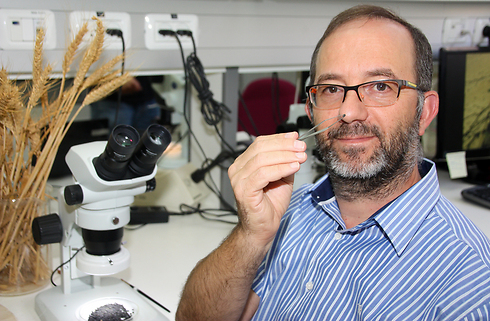Dig at Ohalo II prehistoric site on the shores of the Kinneret uncovers ‘proto-weeds’ indicating hunter-gatherers tried to cultivate wild cereals 11,000 years before the onset of agriculture.
Israeli archeologists have found evidence indicating hunter-gatherers made a small-scale attempt to cultivate wild cereals 11,000 years before the onset of agriculture.
The 23,000-years-old prehistoric site of Ohalo II on the shores of the Kinneret was discovered in 1989 when a severe drought caused a significant decline in the level of Lake Kinneret. Since, several archeological digs in the area found huts, a gravesite, a large collection of animal remains, edible plants and flints.
According to Prof. Ehud Weiss, the head of the Archaeological Botany lab at the Department of Land of Israel Studies and Archaeology at Ben-Gurion University, the findings at the site are exceptionally well preserved because they were burned, charred and sealed by the sedimentation of silts sealed in the low-oxygen conditions under the waters of the Kinneret.

The Ohalo II prehistoric site, which over the years has become synonymous with characteristics of the hunter-gatherers, allows researchers to study the way cereals were sown, reaped and used. Researchers found the remains of 150,000 plants, including edible grains such as wild wheat, barley and oat. Remains of starch found on a grindstone at the site shows that bread was baked there.
“The grain seeds brought to the hut were processed and grinded to flour,” Prof. Weiss explained. “This flour was used to prepare dough that was baked in an oven made of flat rocks that stood outside one of the huts. Surprisingly, they worked the fields and sowed crops even at that prehistoric time, even though we have no evidence that this phenomenon continued in our area. For this reason, we consider our findings as indicative of small-scale trial cultivation rather than success which led to the beginning of farming. Furthermore, since weeds are defined by botanists as plants that developed as a result of the human cultivation, we called the plants we found at the site ‘proto-weeds.'”
As reported by Ynetnews
